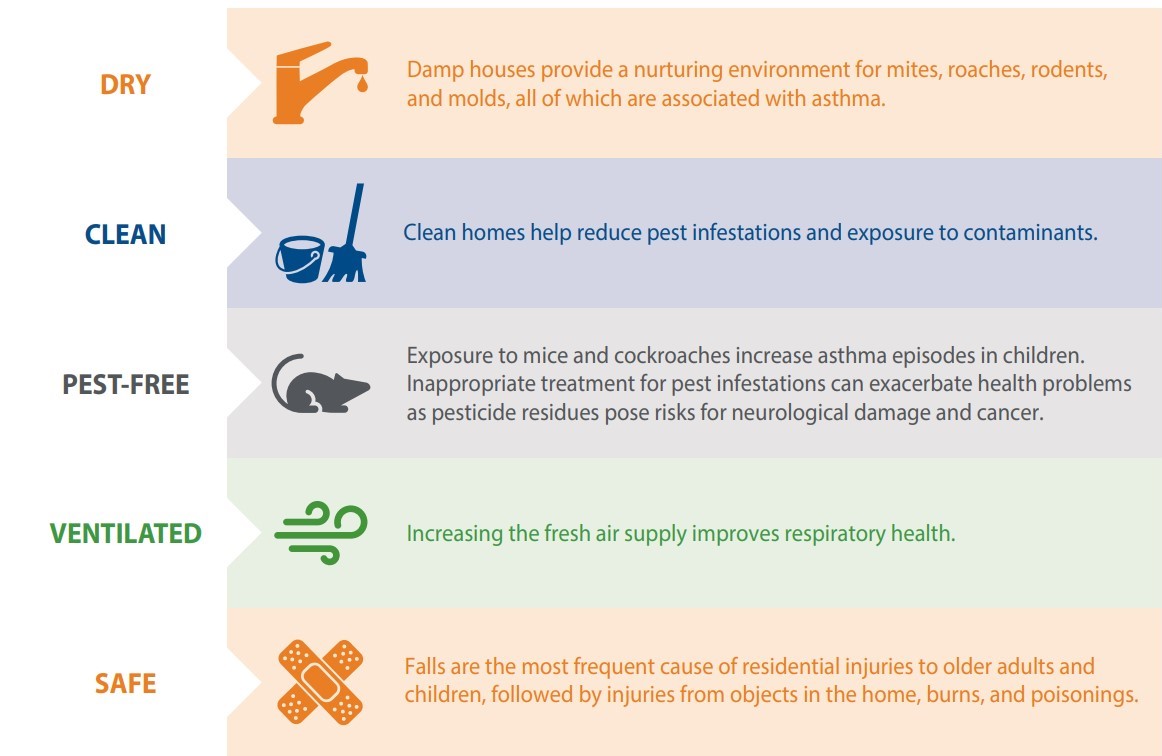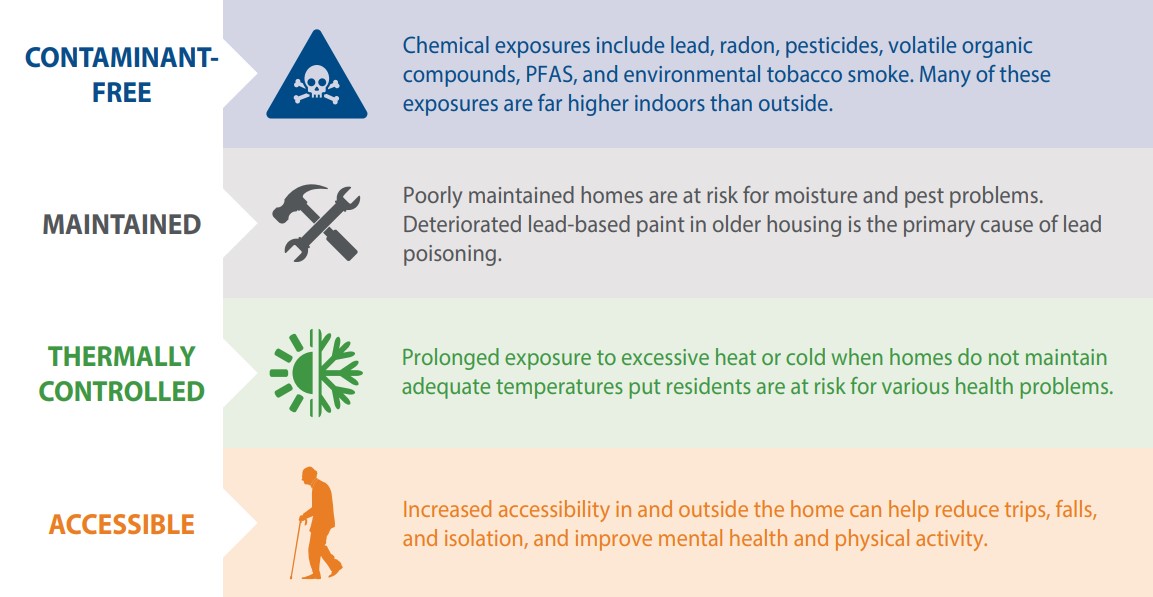Healthy Homes
While your genetic makeup affects your overall health, we know that other factors contribute as well such as diet, exercise and vaccinations. Another critical factor is the condition of the places we live and work. This is a major concern, since most people spend up to 90% of their time indoors.
Creating healthier housing conditions promotes the healthy growth of children and also has the potential to save us all money in terms of health care. Indoor environmental hazards are more harmful to children because their organs and immune systems are not fully developed. Also, for their size, they eat more food, drink more water and breathe more air than an adult. And young children put their fingers into their mouths, and play/crawl on the floor.
A healthy and safe home can be broken down into nine categories:
Resources





